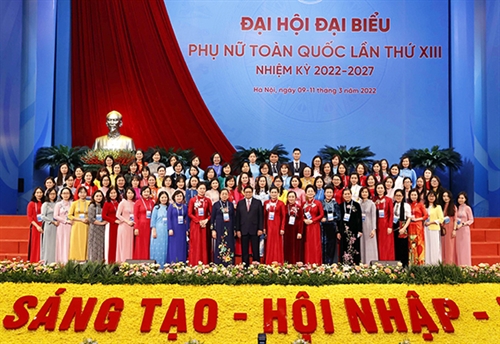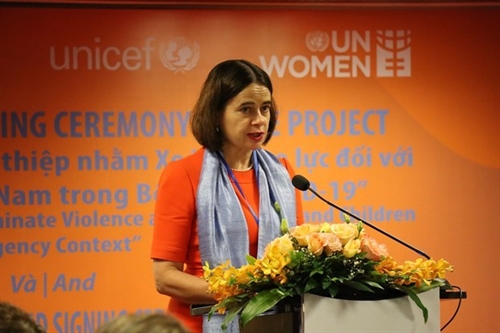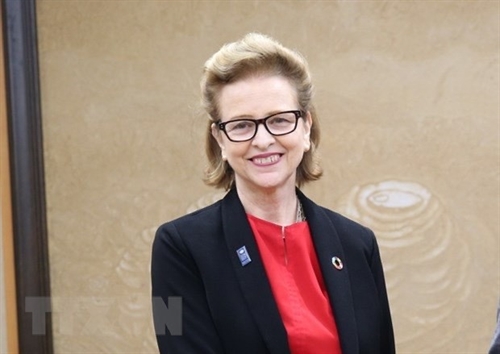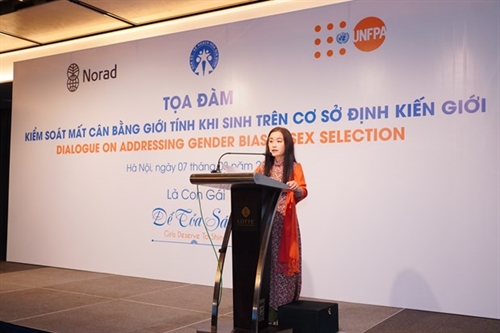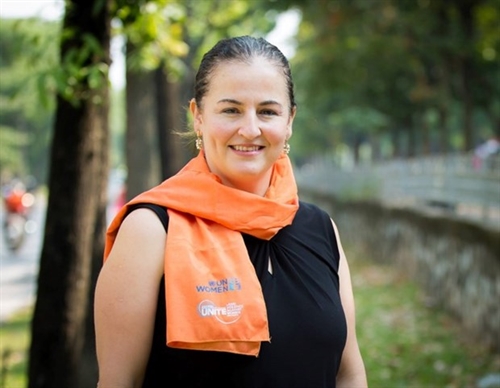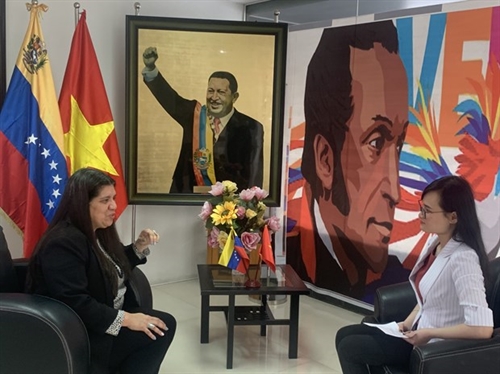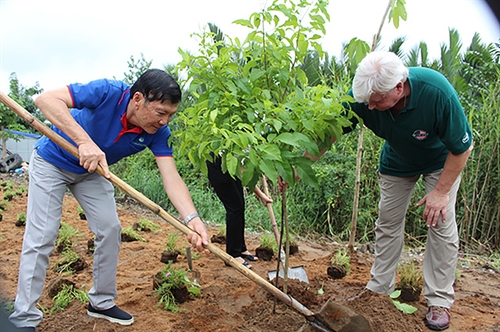Regulations on extended producer responsibility (EPR) have been enacted in Vietnam since 2014. However, their implementation seems to be ineffective. This article reviews the implementation of EPR regulations over the past 15 years and introduces solutions for making such regulations mandatory for producers and importers.
Nguyen Thi
Department of Legal Affairs, Ministry of Natural Resources and Environment
Overview of EPR over the past 15 years
Under Resolution 41-NQ/TW adopted in 2004 by the Party Central Committee’s Political Bureau regarding environmental protection in the period of accelerated national industrialization and modernization, the Party has formulated the policy of step by step applying measures to compel producers and importers to recover and dispose of used products they have produced or imported. This policy aims at applying the EPR model in Vietnam. It has been institutionalized in the 2005 Law on Environmental Protection with the provisions on recovery and disposal of expired or discarded products (Article 67) and concretized in Prime Minister Decision 50 of 2013 on recovery and disposal of discarded products.
In furtherance of the above Resolution, the Party Central Committee adopted in 2013 Resolution 24-NQ/TW on active response to climate change and intensification of natural resource management and environmental protection. In light of this, Article 87 of the 2014 Law on Environmental Protection provides the recovery of discarded products and recovery of energy from wastes, which was specified in Prime Minister Decision 16 of 2015 and Ministry of Natural Resources and Environment (MONRE)’s Circular 34 of 2017. According to the above documents, discarded products subject to recovery include accumulators and batteries, electric and electronic equipment, lubricants of all kinds, rubber tires and inner tubes, and means of transport. These regulations also require producers and importers to set up places for recovery of discarded products by themselves or coordinate with other producers or importers or distributors in doing so. Meanwhile, consumers are required to transport discarded products to recovery places. Unfortunately, there are no regulations on mandatory recycling rate and recycling specifications.
It can be said that the EPR model applied in Vietnam from 2005 to 2020 was based on a voluntary mechanism, thus making the implementation of EPR regulations less effective. As per these regulations, a company will be regarded as having discharged the responsibility to recover discarded products after it established places for product recovery and notified conditions for the recovery. Surveys showed that the number of places for recovery of discarded products set up by companies remains modest while the conditions notified for the recovery seem to be very strict. For instance, Panasonic Vietnam has set up two places for product recovery in Hanoi and Ho Chi Minh City and accept to recover only authentically branded products or intact products without being broken or lacking parts at the recovery places; require customers to transport by themselves products to the recovery places; and does not accept promotional gifts for product exchange. In addition, the recovery process in the country is relatively complicated. Let’s see an example of Toyota Vietnam, which provides a recovery process of 10 stages and asks for reporting on the recovery to the Vietnam Environment Administration under the MONRE. It is sad to say that for over 15 years of implementation of the regulations on responsibility to recover discarded products, producers and importers in the country have yet to recover any product.
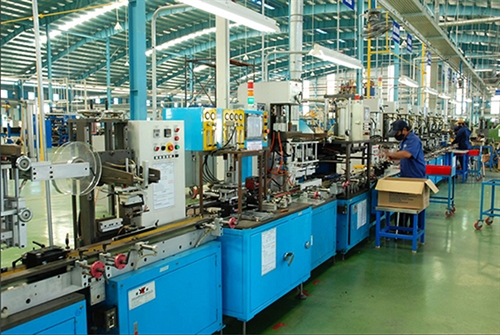 |
Inside a workshop of Dry Cell and Storage Battery JSC. (Pinaco)__https://acquydongnai.org/ |
Solutions for shifting from voluntary EPR model to mandatory one
As mentioned above, the voluntary EPR model has not brought into play positive effects as expected and failed to create a sustainable financial mechanism for the recovery and disposal of used products and packages. It has exerted no impacts on the use of materials, designing of products, and product maintenance and servicing policies that aim to reduce recycling costs through using environmentally friendly materials, designing highly collectible and recyclable products, and extending the product life cycle, etc. Therefore, following the global trend of developing the model of circular economy, it is necessary to apply a mandatory EPR model for achievement of sustainable development goals. To shift from the voluntary EPR model to a mandatory one, the Law on Environmental Protection has laid down some principles and measures for application.
Firstly, setting the mandatory recycling rate and specifications
This is the decisive factor in making EPR regulations mandatory. Article 54 of the 2020 Law on Environmental Protection (the 2020 Law) require producers and importers of recyclable products and packages to recycle such products and packages according to the prescribed recycling rate and specifications. To make it clearer, the Decree detailing the 2020 Law states that mandatory recycling rate is the minimum ratio of volume of products and packages subject to recycling according to prescribed recycling specifications to the total volume of products and packages produced and marketed and imported in the year of EPR implementation. The Decree also specifies the mandatory recycling rate for the first three years, which will be raised once every three years. The highest rate of 22 percent will be applied to aluminum packages and PET bottles while means of transport will be eligible for the lowest rate of 0.5 percent. Such rates are merely equal to one-third of the rates applied in the European countries in the 1980s and 1990s and one-fifth of the rates applied there since the commencement of application of the EPR model.
Regarding recycling specifications, the Decree sets the minimum recovery rate of 40 percent for materials. This rate is not the same as the mandatory recycling rate mentioned above. For instance, when a computer is recycled, at least 40 percent of its plastic and metal materials must be recovered for recycling; the remainder must be disposed of under regulations. This recovery rate is 15-30 percent lower than the rate applied in Europe since the early days of EPR application. Such minimum recovery rate must ensure compliance with the recycling specifications stated in the Decree, e.g., plastic bags must be recycled by one of the following methods: (i) producing recycled plastic particles for use as industrial production materials; (ii) producing other products, including PE fibers; and (iii) producing chemicals, including oil.
Secondly, providing methods of performing the recycling responsibility of producers based on market principles
As stated in Article 54.2 of the 2020 Law, producers and importers may either recycle products and packages or make financial contributions to the Vietnam Environmental Protection Fund as support for recycling of products and packages. To concretize this provision, the Decree provides four methods of recycling products and packages, including recycling by producers themselves; hired recycling; authorized recycling; and a combination of the above methods.
In the form of recycling of products and packages by producers, the market principle has been thoroughly applied in the performance of the producer responsibility, i.e., if the producer finds the recycling beneficial, it may apply this method to perform its responsibility. The producer must register its recycling plan and report recycling results to the MONRE before March 31 every year. If the producer finds the recycling unbeneficial or is unable to recycle products and packages, it may make financial contributions to the Vietnam Environmental Protection Fund as a proof of its fulfillment of the recycling responsibility. The Fund will use such financial contributions to support the collection, transportation, recycling and disposal of products and packages and cover administrative expenses for performance of the recycling responsibility of producers and importers. The level of financial contribution depends on the mandatory recycling rate, volume of marketed products and packages, and norms of recycling costs.
Thirdly, requiring the EPR to be fulfilled on the basis of consensus among the State, enterprises, and social and environmental organizations
The MONRE will perform the state management of performance of the recycling responsibility of producers and importers. The National EPR Council will act as the body advising and assisting the Minister of Natural Resources and Environment in managing, supervising and supporting the discharge of this responsibility. This Council will be composed of representatives of the Ministries of Natural Resources and Environment; Finance; Industry and Trade; Health, and Agriculture and Rural Development; representatives of producers and importers; representatives of recycling units and waste treatment units; and representatives of related social and environmental organizations. The Council will have its assisting office based at the MONRE. This office will work on a part-time basis and carry out professional activities in operating the EPR system, such as registration of recycling plans and reporting on recycling results for use as a basis for devising measures to supervise the recycling process, ensure the mandatory recycling rate and specifications, and manage EPR data. It is an inevitable requirement to set up the National EPR Council’s assisting office in the EPR system operation model in the world, e.g., clearing houses in the European countries, Korean Environment Corporation (KECO) in the Republic of Korea, or Recycling Fund in Taiwan (China).
The establishment of the National EPR Council and its assisting office is in line with the Party Central Committee’s Resolution 18 on assigning enterprises and social organizations to perform a number of public administrative tasks and services that the State needs not to carry out, and Resolution 19 on intensifying the mobilization of social resources for the provision of public non-business services. This is also an important move to implement the general program on administrative reform for the 2021-30 period, which permits the handover of the tasks that state administrative agencies should not perform or inefficiently perform to social organizations or non-governmental organizations.
Fourthly, issuing regulations on determination of charge rates for collection and disposal of household solid wastes based on volume so as to boost at-source sorting of household solid wastes (the main source of generation of used products and packages)
Under regulations, household solid wastes from households and individuals will be sorted into at least three types: (i) reusable and recyclable solid wastes; (ii) food wastes; and (iii) other wastes. After being sorted, household solid wastes must be packed in appropriate bags and then transferred to functional entities for recycling or disposal. Specifically, reusable and recyclable solid wastes will be transferred to waste recyclers or reusers or entities licensed to collect and transport household solid wastes; food wastes and other wastes will be contained in suitable packages under regulations and transferred to licensed household solid waste collectors and transporters; food wastes may be used as organic fertilizers or animal feed.
Charge rates for collection, transportation and disposal of household solid wastes generated from households and individuals will be calculated in accordance with the pricing law based on the weight or volume of sorted wastes. Particularly, households and individuals will not be required to pay charges for collection, transportation and disposal of recyclable and reusable household solid wastes and hazardous solid wastes as long as they sort out generated wastes under regulations.
Regarding household sold waste collection, transportation and disposal charge rates, current regulations assign provincial-level People’s Committees to determine weight- or volume-based charge rates through selling prices of household solid waste bags, which are inclusive of bag production cost and household solid waste collection, transportation and disposal service charge. The charge rates may also be determined based on the volume of household solid waste containers or the weight of household solid wastes (to be applied to agencies and organizations) or by other methods provided by local administrations as appropriate.
Hence, regulations on determination of household solid waste collection, transportation and disposal charge rates will help boost at-source sorting of wastes and create comparatively stable sources of materials for the recycling industry, thus facilitating recycling activities of producers and importers.
Fifthly, further adopting and improving policies on development of infrastructure facilities serving solid waste collection and disposal; developing the recycling industry; providing incentives and supports for environmental protection activities; and promoting the development of circular economy
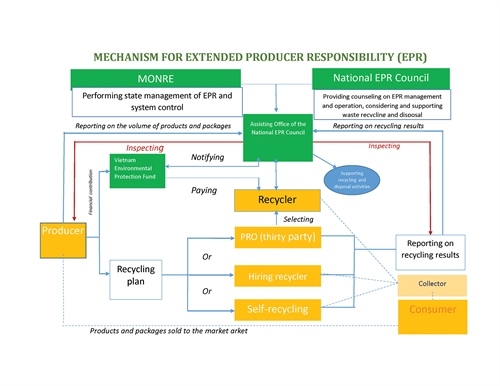 |
Policies on development of infrastructure facilities serving solid waste collection, transportation and disposal have been adopted and gradually improved in accordance with the law on environmental protection, offering many incentives and supports for a wide range of environmental protection activities.
Worth of note, waste recycling activities are entitled to the highest incentives. Regarding land, in addition to land use levy and land rental exemption or reduction, waste recyclers are also eligible for allocation of land with technical infrastructure facilities such as roads, electricity, water supply and drainage, information and communication and energy already connected with technical infrastructure systems of surrounding areas without having to participate in auction of land use rights. As for investment funding, waste recycling project owners may borrow loans equal to up to 80 percent of total construction investment funds with an interest rate equal to half of the interest rate of the State’s investment credit. They are also entitled to tax, charge and fee incentives and price subsidies for environmental protection products and services. Particularly for investment projects and tasks funded by the state budget, the green procurement mechanism will be applied.
Development of the environmental industry and services also constitutes a new content of the Law on Environmental Protection. Accordingly, the State will invest in, and adopt policies to support entities and individuals to develop, the environmental industry and implement a roadmap for opening the environmental product market in conformity with the country’s international commitments. The State will also develop an environmental service market, boost commercial liberation for environmental services, and promote investment in environmental services, particularly waste collection, transportation, recycling and disposal. This will create an important basis for the State to devise solutions for accelerating the construction of infrastructure facilities for solid waste collection, recycling and disposal - the key factor to the successful implementation of EPR.
The concept of “circular economy” appeared for the first time in Article 142 of the 2020 Law. The Law also provides circular economy indicators, sets orientations for attaining these indicators and a roadmap for application of the circular economy model, and provides incentives to promote the development of circular economy. As analyzed above, EPR, with its key role as a financial mechanism for handling used products and packages, has a big impact on all stages of production and consumption. Hence, EPR can serve as an effective tool for reaching circular economy indicators. In other words, the development of the circular economy model constitutes one of major policies to develop EPR in Vietnam and, vice versa, development of EPR will help provide a sustainable foundation for circular economy in Vietnam.
Over the past 15 years, the EPR implementation has encountered great challenges and obstacles which stem from the fact that although EPR is provided by law as a mandatory mechanism, its implementation depends mostly on businesses’ voluntariness. However, together with the shaping of the mindset of “not to trade off the environment for economic benefits”, EPR has been fully applied as a mandatory mechanism, thus enabling the country to soon achieve both economic development and environmental protection goals and, at the same time, contributing to settling labor and employment issues.-
